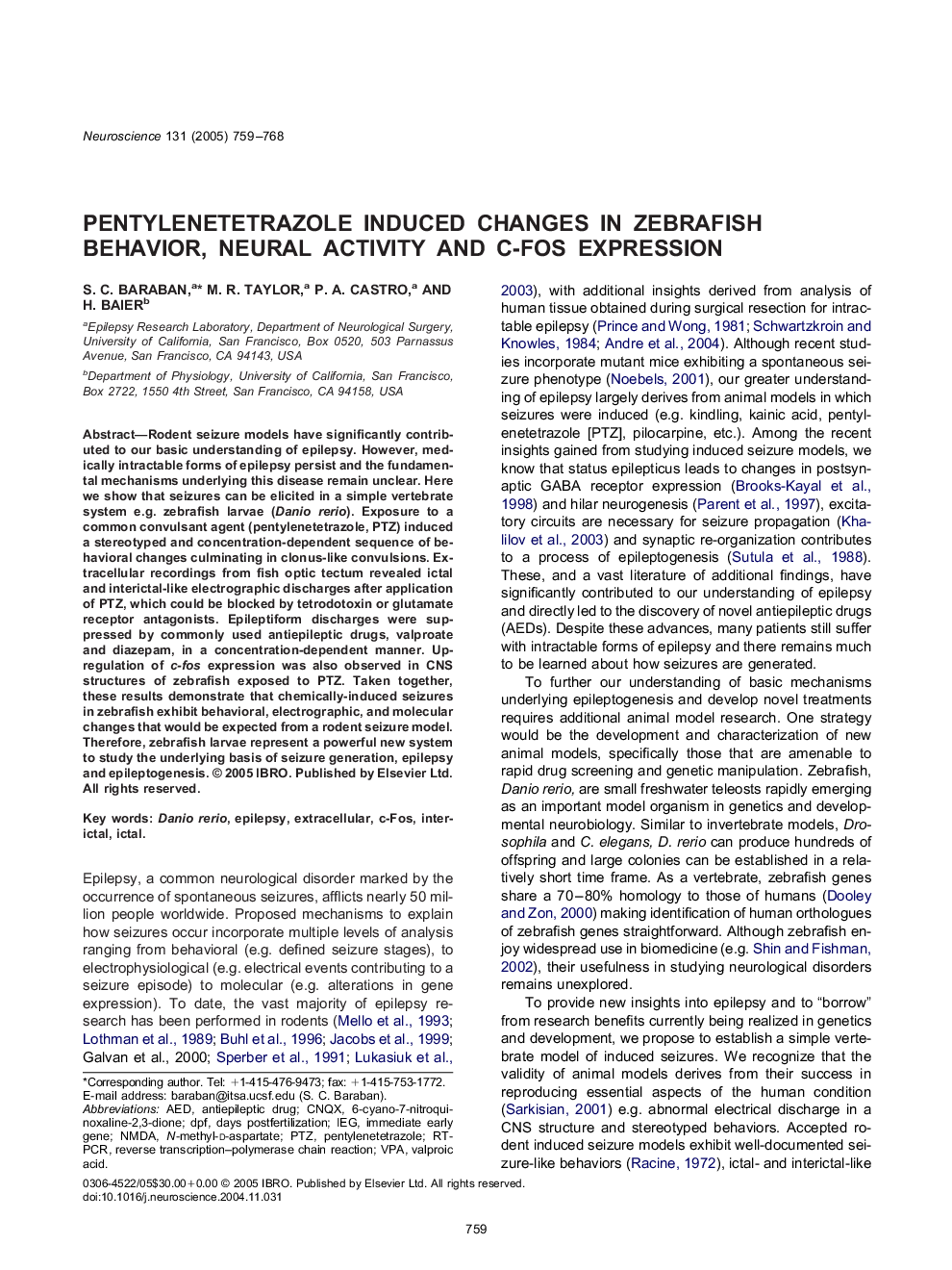| Article ID | Journal | Published Year | Pages | File Type |
|---|---|---|---|---|
| 9425791 | Neuroscience | 2005 | 10 Pages |
Abstract
Rodent seizure models have significantly contributed to our basic understanding of epilepsy. However, medically intractable forms of epilepsy persist and the fundamental mechanisms underlying this disease remain unclear. Here we show that seizures can be elicited in a simple vertebrate system e.g. zebrafish larvae (Danio rerio). Exposure to a common convulsant agent (pentylenetetrazole, PTZ) induced a stereotyped and concentration-dependent sequence of behavioral changes culminating in clonus-like convulsions. Extracellular recordings from fish optic tectum revealed ictal and interictal-like electrographic discharges after application of PTZ, which could be blocked by tetrodotoxin or glutamate receptor antagonists. Epileptiform discharges were suppressed by commonly used antiepileptic drugs, valproate and diazepam, in a concentration-dependent manner. Up-regulation of c-fos expression was also observed in CNS structures of zebrafish exposed to PTZ. Taken together, these results demonstrate that chemically-induced seizures in zebrafish exhibit behavioral, electrographic, and molecular changes that would be expected from a rodent seizure model. Therefore, zebrafish larvae represent a powerful new system to study the underlying basis of seizure generation, epilepsy and epileptogenesis.
Keywords
Related Topics
Life Sciences
Neuroscience
Neuroscience (General)
Authors
S.C. Baraban, M.R. Taylor, P.A. Castro, H. Baier,
